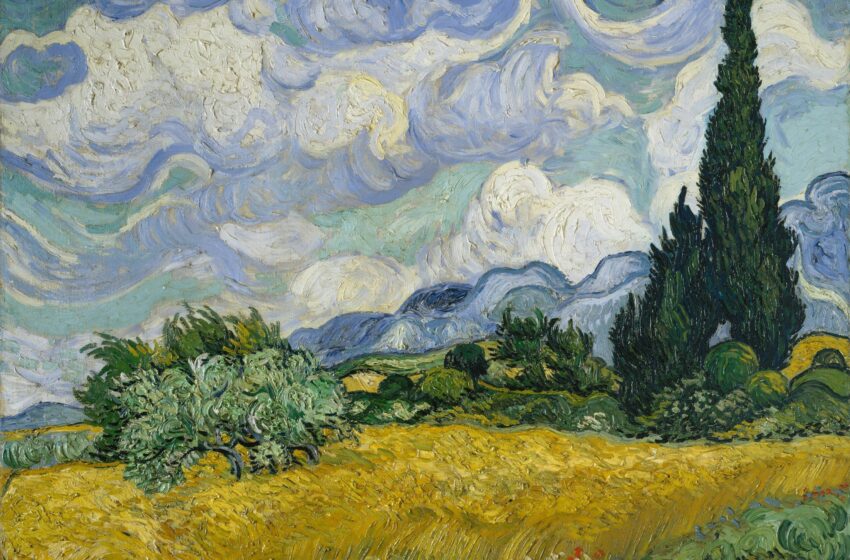How to Find This Generation’s Vincent Van Gogh

Today, the works of Vincent Van Gogh regularly sell for tens of millions of dollars at auction. But do you know the price of a Van Gogh painting while he was alive?
Van Gogh sold just one painting in his lifetime. The Red Vineyard, painted in 1888, earned him 400 francs (about $12,000 USD in 2020). That work was bought by Anna Boch, an heiress and fellow artist who assembled one of the most important collections of Impressionist painting in Europe at the time, housed primarily in her Brussels home.
As a collector, Anna Boch was ahead of the curve. Though Van Gogh would die in relative obscurity, she recognized his genius early on, not only purchasing The Red Vineyard but actively promoting his work as well. Broadly, the other paintings Boch chose for her collection also increased in prestige as time passed, now hanging in some of the most prestigious museums in the world, including the Royal Museums of Fine Arts of Belgium, the Musée d’Orsay in Paris, and the Pushkin Museum in Moscow (the current home of The Red Vineyard).

If you are starting or expanding your fine art collection, it’s critical to be able, like Anna Boch, to identify the contemporary artists who are destined to become their generation’s Van Gogh. And to do that, you will need to develop what has been called your “aesthetic quotient” (AQ) — the ability to appreciate and evaluate visual art of all types.
Developing AQ is something anyone can do, even if you don’t have a background in fine art, and even if you don’t have a huge budget. Once you’ve refined your AQ, you can begin to build an excellent collection and separate yourself from those who buy merely for decoration or status-seeking. If you are early in your journey as a collector, here are some ways to get started.
The First Step Is Learning
The first step in collecting art is not buying but learning. Anna Boch developed her AQ by studying directly under some of the most renowned European artists of her time. But it’s not a requirement to learn to create art yourself. Simply visiting museums and galleries in your area, talking to gallerists and fellow collectors, and reading widely about contemporary art will give you the groundwork needed to select pieces for your collection by great up-and-coming artists.

Develop Your Vision
Every successful collector, from Paul Mellon to Herbert and Dorothy Vogel, has a unique, cohesive vision for the art they seek out, often rooted in a certain period or style. As you learn more about contemporary art, pay attention to what moves you personally — and what doesn’t. The more art you experience in person, the more you will be able to discern which pieces fit your growing vision of a collection and which emerging artists are making art that fits that vision.
Become a Fan—and Promoter
Contemporary collectors often become artists’ biggest fans. The Vogels, for example, have been known to keep files of articles, reviews, announcements, and letters related to the artists they bought. A collector attempting to create a quality collection should feel comfortable doing similarly, and understand that the investment in fine art goes much further than the buy itself. When attempting to identify a contemporary artist whose work may stand the test of the time, learn about who the artist’s current advocates are. And once you have purchased your first few pieces, be willing to become the artist’s most prominent advocate yourself.
By actively promoting the artists you collect, you can contribute to how future collectors and art appreciators see their work. Van Gogh’s current legacy, for example, is owed to the people who were uniquely passionate about sharing his work. That includes Anna Boch and, most notably, his sister-in-law, Johanna Bonger, who organized exhibitions of his work with prominent art dealers during his life and published his letters after his death. These actions helped propel him to his current level of fame.
Understand Your Role as a Community Standard Bearer
Finally, as you seek out the next great artist for your collection, remember that collecting art isn’t just for you — it ultimately benefits the whole community. The best collectors are on a mission to enrich the lives and develop the AQ of the people around them. One such example is noted art patron and collector Robert Gilmor Jr. of Baltimore (1774–1848), who explicitly stated his aim of encouraging others to appreciate fine art. In a letter, Gilmor said that his collection aimed to stimulate “my countrymen to cultivate a taste for the Fine Arts.” He is one of several collectors of his time who set out with a clear ambition to educate the American masses on fine art.
To have a chance at selecting a piece by your generation’s Vincent Van Gogh, you’ll need to develop your AQ, do your research, and have a strong desire to promote and share the work you bought. When you do that, you will at the very least have a collection you are entirely happy with — and you may even find that you have a painting by the next Van Gogh sitting above your mantelpiece.





